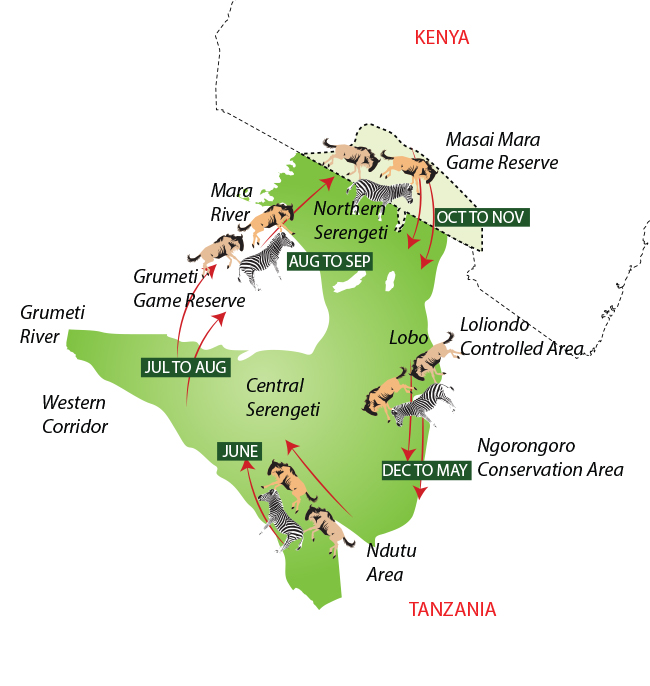SERENGETI GREAT WILDEBEEST MIGRATION
The great Serengeti wildebeest migration is the movement of vast numbers of the Serengeti’s wildebeest, accompanied by large numbers of zebra, and smaller numbers of Grant’s gazelle, Thomson’s gazelle, eland and impala. These move in an annual pattern which is fairly predictable ecological system. They migrate throughout the year, constantly seeking fresh green pasture and, it’s now thought, quality drinking water. The short & light rainfalls in November and December (sometimes early October), draws the migration rapidly south from Kenya’s Masai Mara down the eastern side of Tanzania’s Serengeti into these sweet short-grass plains. The wildebeest and other herds of Zebras and antelopes settle in the southern plains between January and April – usually the easiest time to see the migration in Tanzania. In April and May the heavy rains set in. The depleted southern plains are less attractive than the long grass plains up in the western corridor and the migration has started moving north (westerly) again. Large river crossings on the Grumeti and Mara Rivers occur as the migration heads back into Kenya’s Maasai Mara – the season dries out and fresh grazing and water can be found in the far north. The Mara is usually at its best in August, September and October. The small maps below give a general idea on the movement of the migration, see a more detailed map of the Serengeti ecosystem plus explanations on how the migration really works!

Design your own trip
Get in touch with our Tour Consultant to start planning your own unforgettable experience
Contact us
- +255 742 688 249
- info@safarinuggets.com





© 2023 Safari Nuggets – All Rights Reserved.
